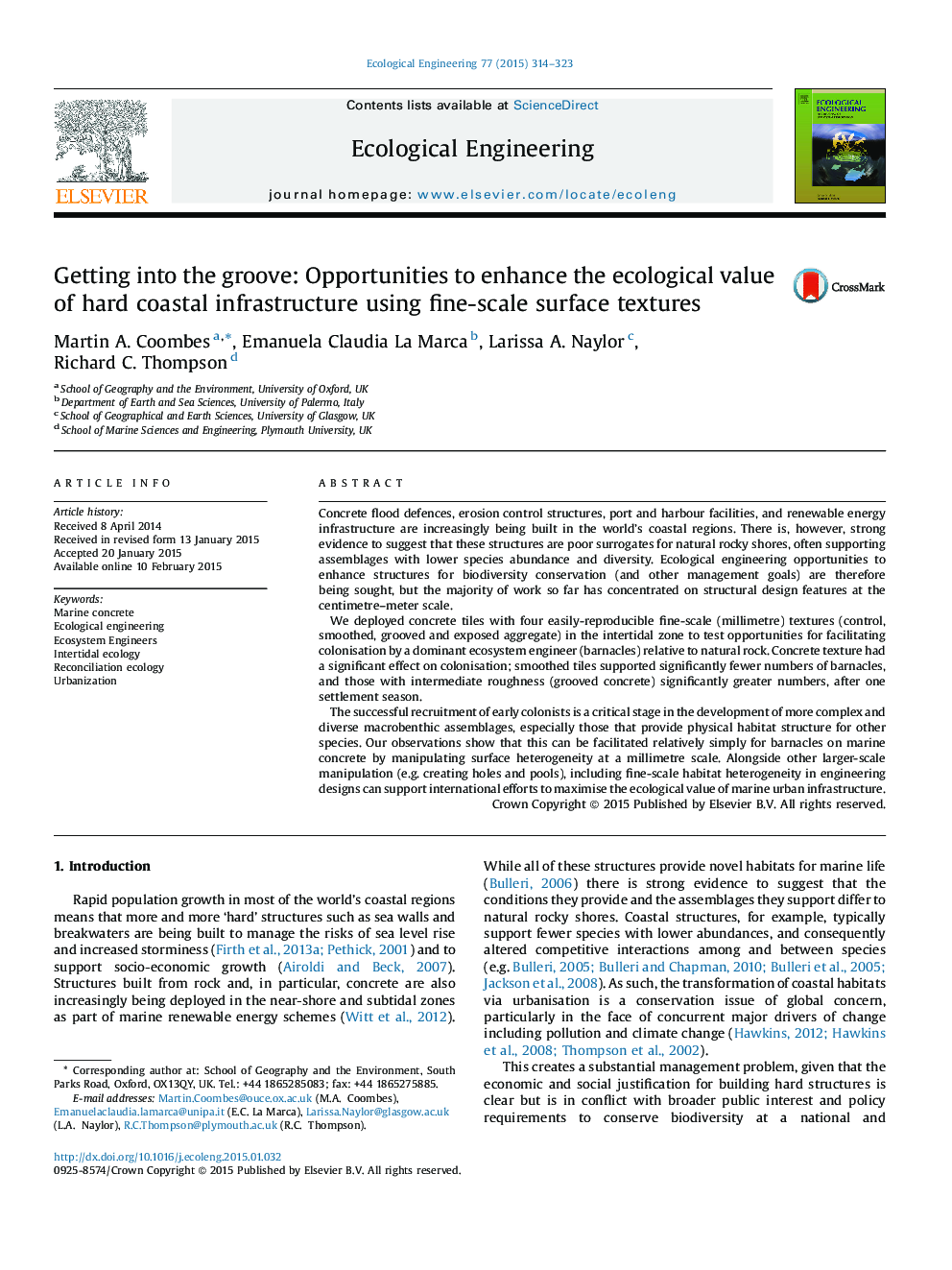| کد مقاله | کد نشریه | سال انتشار | مقاله انگلیسی | نسخه تمام متن |
|---|---|---|---|---|
| 4389278 | 1618022 | 2015 | 10 صفحه PDF | دانلود رایگان |
• Concrete coastal infrastructure is a poor surrogate for natural rocky shores.
• We tested ecological engineering of concrete using fine-scale textural manipulation.
• A grooved texture increased the abundance of a key ecosystem engineer (barnacles).
• Facilitating early colonists can support biodiversity conservation on urban coasts.
Concrete flood defences, erosion control structures, port and harbour facilities, and renewable energy infrastructure are increasingly being built in the world’s coastal regions. There is, however, strong evidence to suggest that these structures are poor surrogates for natural rocky shores, often supporting assemblages with lower species abundance and diversity. Ecological engineering opportunities to enhance structures for biodiversity conservation (and other management goals) are therefore being sought, but the majority of work so far has concentrated on structural design features at the centimetre–meter scale.We deployed concrete tiles with four easily-reproducible fine-scale (millimetre) textures (control, smoothed, grooved and exposed aggregate) in the intertidal zone to test opportunities for facilitating colonisation by a dominant ecosystem engineer (barnacles) relative to natural rock. Concrete texture had a significant effect on colonisation; smoothed tiles supported significantly fewer numbers of barnacles, and those with intermediate roughness (grooved concrete) significantly greater numbers, after one settlement season.The successful recruitment of early colonists is a critical stage in the development of more complex and diverse macrobenthic assemblages, especially those that provide physical habitat structure for other species. Our observations show that this can be facilitated relatively simply for barnacles on marine concrete by manipulating surface heterogeneity at a millimetre scale. Alongside other larger-scale manipulation (e.g. creating holes and pools), including fine-scale habitat heterogeneity in engineering designs can support international efforts to maximise the ecological value of marine urban infrastructure.
Journal: Ecological Engineering - Volume 77, April 2015, Pages 314–323
